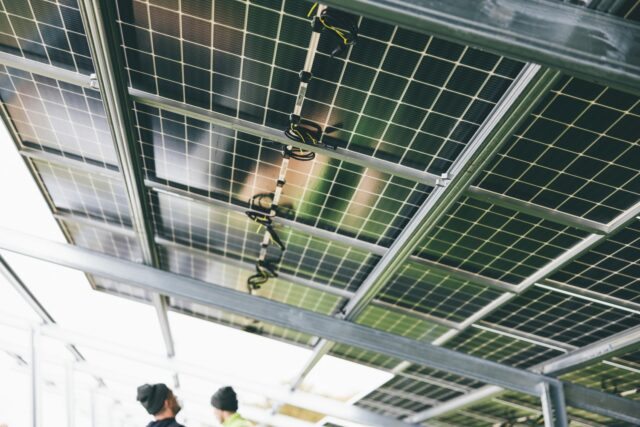Imagine a day powered entirely by the sun – from the first light of dawn to the soft glow of dusk. In the UK, where every ray of sunshine is precious, solar energy is transforming how we power our homes and live our lives. Let’s journey through a typical day in a solar-powered household.
Morning: Sunrise and Energy Awakening
As the sun peeks over the horizon, solar panels begin their day’s work. Even on a typical overcast British morning, photovoltaic cells in the panels start converting available sunlight into electrical energy. Inside the house, the kettle boils for a morning cuppa, using energy stored from yesterday’s sunshine.
Mid-Morning: Peak Production Hours
By mid-morning, as the sun climbs higher, the panels reach their peak energy production. If it’s a work-from-home day, laptops and other devices are powered directly by solar energy. Excess energy not immediately used can be stored in the home’s solar battery system or exported back to the grid, often for a credit on the energy bill thanks to schemes like the Smart Export Guarantee (SEG).
Afternoon: Powering Through the Day
In the afternoon, solar energy continues to support the household’s needs. It’s an efficient time to run energy-intensive appliances like washing machines or dishwashers. With smart home systems, these can be scheduled to operate when solar production is at its peak, maximising the use of free solar energy and minimising reliance on the grid.
Evening: Sunset and Energy Shift
As the sun sets, solar energy production winds down. But this doesn’t mean the house goes dark. Energy stored in the battery system during the day powers evening activities. From cooking dinner in the electric oven to watching the telly, the stored solar energy keeps everything running smoothly.
Night: Relying on Stored Power or the Grid
Throughout the night, when solar panels are dormant, the home draws on the stored solar energy. If the battery runs low, the system seamlessly switches to grid power. For homes without a storage battery, the grid supplies the needed power, often at a lower night-time rate.
The Bigger Picture: Solar Energy and Sustainability
This day-long journey with solar energy highlights not just the practicality of solar power in daily life but also its role in broader sustainability. By using solar energy, households reduce their carbon footprint and contribute to a greener future, one day at a time.
From dawn to dusk, solar energy offers a reliable, sustainable, and cost-effective way to power our homes. It’s a testament to how renewable energy can be seamlessly integrated into our daily lives, proving that even in the UK, with its famous grey skies, solar power is a practical and eco-friendly energy solution.
